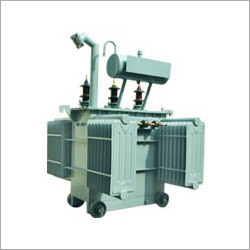Distribution Transformer
Product Details:
- Frequency (MHz) 47Hz to 63Hz Hertz (HZ)
- Efficiency 96- 99%
- Phase Three Phase
- Warranty 01 Year
- Operating Temperature -20 degree C to 50 degree C Celsius (oC)
- Click to View more
Distribution Transformer Price And Quantity
- 408900 INR/Piece
- 1 Piece
Distribution Transformer Product Specifications
- -20 degree C to 50 degree C Celsius (oC)
- Three Phase
- 01 Year
- 47Hz to 63Hz Hertz (HZ)
- 96- 99%
Distribution Transformer Trade Information
- 10 Piece Per Week
- 7 Days
- All India
Product Description
Improved transformer technology, selected material grade and optimized designs result into reduced core and winding losses. The concept of transformers evaluation on Total Owning Cost takes into account the initial cost visa-vis evaluated cost of losses occurring in the estimated transformers life span. A well-conceived TOC evaluation will lead to prudent procurement of efficient transformers with low losses both in case of (no-load or excitation) and copper losses (load losses). Efficiency gains occur in better grade of silicon steel core and more copper by reducing both the losses.
Winding : Paper insulated round/rectangular soft drawn electrolytic copper conductors are used to make various types of windings. Trans-positioned multiple conductors are used to ensure uniform current distribution & reduce eddy currents. Completed winding coil is rocessedin well ventilated electrically heated oven prior to oil impregnation.
Core : Constructed of Cold rolled, grain oriented silicon steel low watt loss Laminations & high saturation limits. Inter leaved core construction having mitered joints are build using special fixtures to achieve highest stacking factor, reduced loss & vibration noise level. Legs and yokes are braced by means of epoxy resin impregnated fiber tapes. Adequate longitudinal cooling ducts provided to eliminate hot spots without effecting uniform flux distribution throughout the magnetic and electric circuits.
Assembly : All coils are assembled together on the core limb. The core & coil assembly is rigidly supported & clamped by fabricated end frame parts. Coils are firmly clamped by un-impregnated high density laminated wood rings mounted on the top of each limb winding assembly to with stand high axial short circuit forces.
Bushing : Porcelain type bushing for High Voltage & Current
Tank : Built with high grade H.R. Steel adequately stiffened to withstand vacuum & high Pressure.
Tap Changing Gears : On load tap changer or off circuit tap switch with manual or motorized electronic controls to take care of voltage fluctuations. Optional RTCC with AVR for remote operations.
Conservator : Provided for oil expansion & contraction with oil level indicators to monitor Min/Max oil levels.
Cooling : Normally provided with ONAN System, optional indented systems are ONAF, OFAF OR OFWF.
Protections : WTI, OTI, MOG, GOR (BR, OSR) with alarm and trip contact to protect against external short circuit and earth fault.

Price:
- 50
- 100
- 200
- 250
- 500
- 1000+





 English
English Spanish
Spanish French
French German
German Italian
Italian Chinese (Simplified)
Chinese (Simplified) Japanese
Japanese Korean
Korean Arabic
Arabic Portuguese
Portuguese